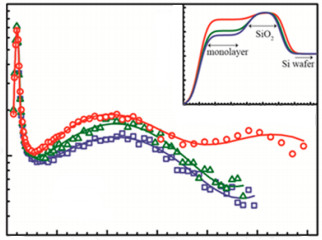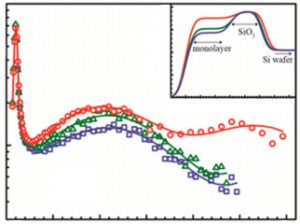Three-legged 2,2′-bipyridine monomer at the air/water interface: monolayer structure and reactions with Ni(II) ions from the subphase,
Wenyang Dai, Lay-Theng Lee, Andri Schütz, Benjamin Zelenay, Zhikun Zheng, Andreas Borgschulte, Max Döbeli, Wasim Abuillan, Oleg V. Konovalov, Motomu Tanaka and A. Dieter Schlüter, Langmuir, 2017, 33 (7), 1646
The behavior of compound 2 [1,3,5-tri(2,2′-bipyridin-5-yl)benzene] with three bipyridine units arranged in a star geometry is investigated in the presence and absence of Ni(ClO4)2. Its properties at the air–water interface as well as after transfer onto a solid substrate are studied by several techniques including Brewster angle microscopy, X-ray reflectivity, neutron reflectivity, X-ray photoelectron spectroscopy, Rutherford backscattering spectrometry, and atomic force microscopy combined with optical microscopy. It is found that compound 2 within the monolayers formed stays almost vertical at the interface and that at high Ni2+/2 (Ni2+/2 = 4000, 20′000) ratios two of the three bipyridine units of 2 are complexed, resulting in supramolecular sheets that are likely composed of arrays of linear metal–organic complexation polymers.



